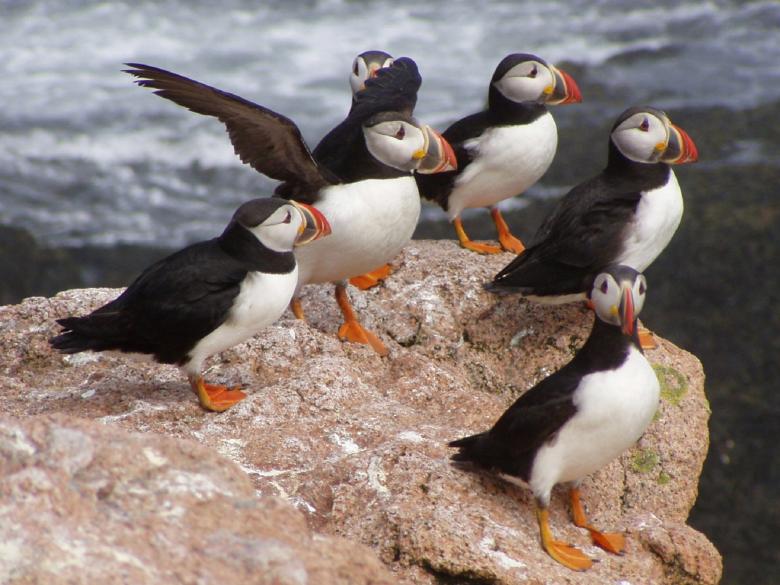However, over time, it was realized that dráttur was not a sustainable method. Now “fleyg” is the only method of catching puffins on land. The birds are caught with a fowling pole (fleygastong). The fowler sits in a sessur, a capture site, in the colony where the birds fly, and with his fowling pole skillfully plucks the birds from the air.
There are no accurate and up-to-date statistics on hunting in the Faroe Islands, but we do know that the Faroese puffin population has declined by about 70 percent in the past 50 years.
There is good, however: the protection of the birds is progressing in great strides as well as the main goal of conservation, protection and preservation of puffin populations in the face of various threats, including climate change. Indeed, the decline of puffin populations is affected by a combination of factors, of which CC is counted as the most serious: lack of food for seabirds, rising average sea temperatures affecting reproductive success and/or adult survival of seabirds, and general loss of biodiversity. Thus, major multilevel efforts are underway to monitor and mitigate the impacts of CC on puffins and their habitats, as well as to raise awareness of the importance of their conservation.
The issue has obviously attracted media attention as well. Consider, for example, Mike Day’s documentary The Islands and the Whales (2016), which provides excellent insight into the issue, reflecting the views of different parties. This focus is perhaps due to the iconic look of the bird, which makes it widely recognizable and allows the risks related to CC to be communicated in an understandable way to the general public. There are also signs of great interest at policy and educational levels. In 2010, for example, an intersectoral workshop was held in Malmö, Sweden, aimed at preparing an action plan for seabirds in the Nordic West.
In addition to tighter restrictions on puffin hunting, the Danish government is also taking action on land protection by designating the most important puffin nesting colonies as protected areas. In fact, in 2012, the Secretariat of the Convention on Wetlands of International Importance (Ramsar Convention) announced that the Danish government had designated three new wetlands of international importance in the Faroe Islands (Mynkines, Skuvoy, and Nólsoy).
Finally, it should be mentioned that the puffin hunting tradition is a controversial element of ICH, in which the interests of intangible cultural heritage custodians (puffin hunting practitioners and local communities), on the one hand, and nature activists, on the other, clash sharply. Many non-governmental organizations involved in nature conservation are calling for a complete ban on puffin hunting. On the other hand, Faroese officials defend these traditions as a sustainable alternative to food imports. They also note that the community nature of whaling and seabird hunting helps maintain social ties within the community. Faroese hunters take pride in knowing exactly where their food comes from and killing the animals themselves, rather than relying on less sustainable and less humane industrial farming. In addition, sustainable tourism is also being worked on because guided tours are provided for limited numbers of tourists to visit the colonies.


